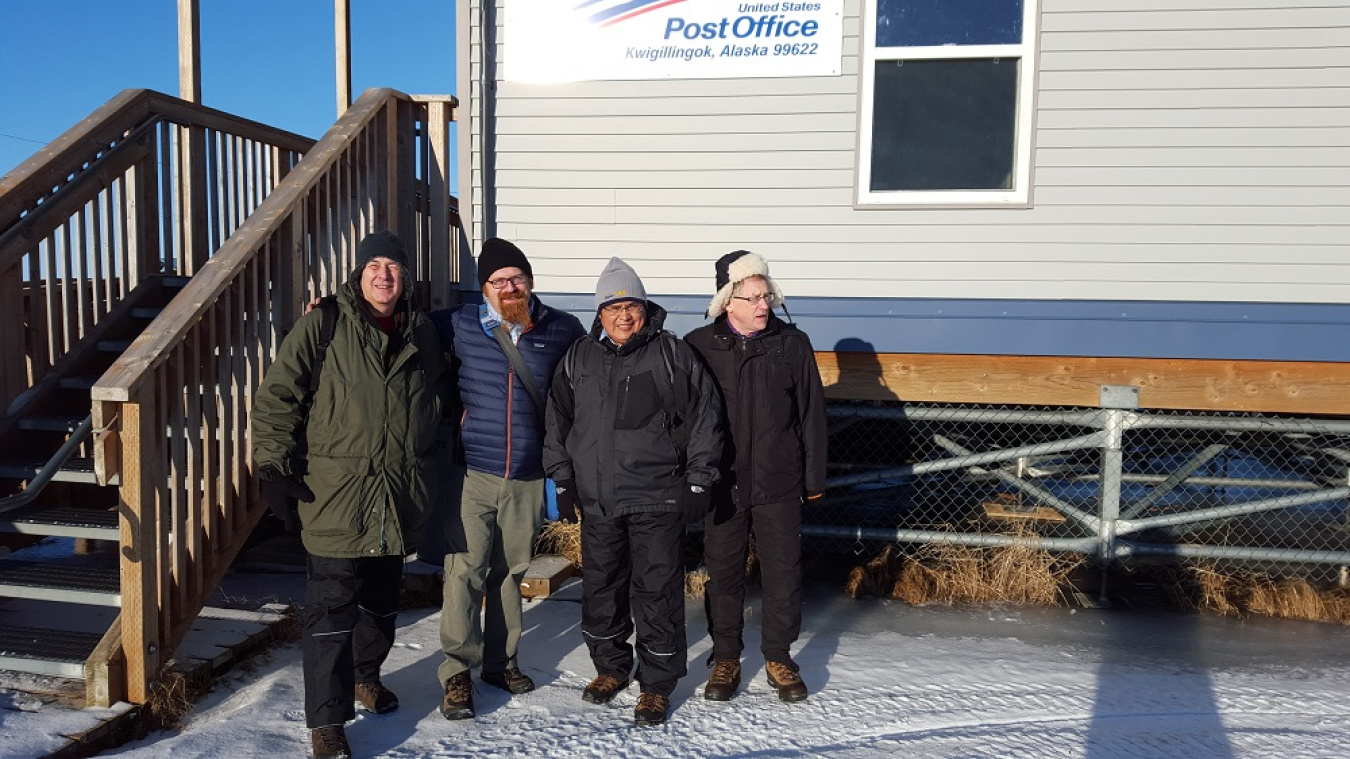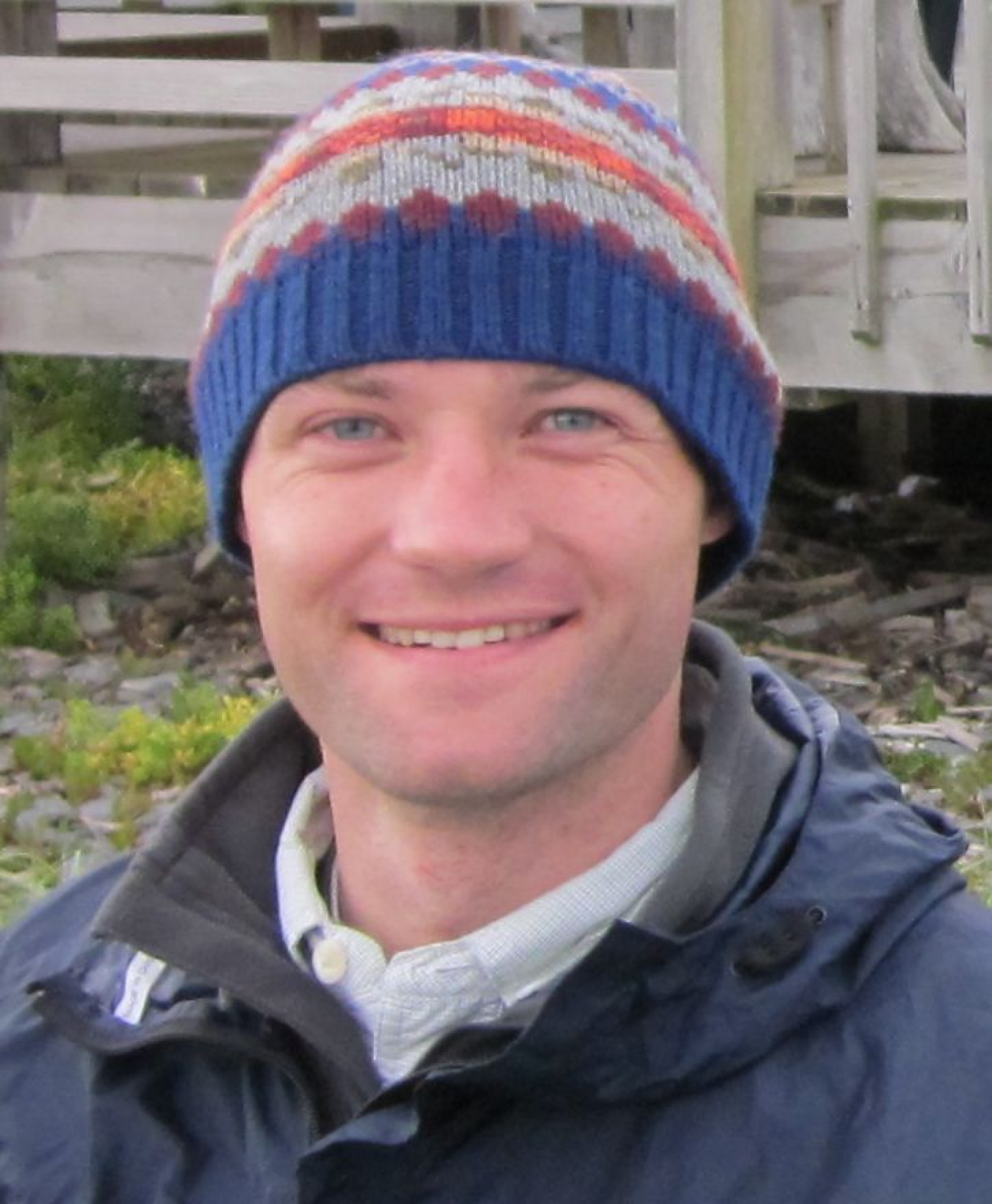The U.S. Department of Energy Office of Indian Energy's Alaska Energy Pioneer Spring 2016 newsletter highlights opportunities and actions to accelerate Alaska Native energy development.
Senate Field Hearing in Bethel Focuses on Energy Technology Innovation and Deployment

Senator Murkowski, Chair of the U.S. Senate Committee on Energy and Natural Resources, and Secretary Moniz listen to testimony at the field hearing in Bethel on Feb. 15. Photo from Dean Swope, Alaska Public Media, NREL 36647
On Feb. 15, Alaska Senator Lisa Murkowski, Chair of the U.S. Senate Committee on Energy and Natural Resources, held a senate hearing in Bethel focused on examining energy technology innovation and deployment opportunities for Alaska’s energy future.
Energy Secretary Ernest Moniz attended the hearing, along with Office of Indian Energy Director Chris Deschene, Senior Policy Advisor Doug MacCourt, and Alaska Program Manager Givey Kochanowski.
“These communities around here are a hundred percent powered by diesel. You’re not going to see Oscarville tied into a natural gas pipeline. So what do we have? We’ve got the Kuskokwim River; we’ve got the wind; we have the sun. This is going to be the future of our small remote communities. They will be their own micro-grids. We will give definition to the term here in Alaska.” —Senator Murkowski
Solar Energy Prospecting in Remote Alaska

NREL Senior Finance Analyst Paul Schwabe
In February, the Office of Indian Energy released a new report called “Solar Energy Prospecting in Remote Alaska: An Economic Analysis of Solar Photovoltaics in the Last Frontier State.” Written by National Renewable Energy Laboratory (NREL) Section Supervisor and Senior Finance Analyst Paul Schwabe, the report highlights some of the enormous energy challenges in rural Alaska and efforts to improve the situation.
“Using solar energy in Alaska may seem like a far-fetched idea to many readers initially,” explained Schwabe. “There were some understandably skeptical responses around the amount of sunlight received in Alaska, which varies significantly geographically and by the time of year.”
The report provides context around the high energy costs in rural Alaska and explains how solar energy can make sense from economic, logistical, environmental, and village self-reliance standpoints, among others.
AK Energy in Action
$1 Million in DOE Funding to Help Position Villages to Build on Past Successes

Pictured above from left to right are MacCourt, Kochanowski, Deschene, and Intelligent Energy Systems Founder Dennis Meiners. Photo from Givey Kochanowski, NREL 36648
It’s been nearly a decade since the NANA Regional Corporation first tapped into DOE support with the goal of improving the energy security of its 11 member communities. The strategic energy planning and feasibility studies DOE funded in 2007 established a foundation of knowledge and capacity that NANA has steadily built upon to maximize the returns on DOE’s initial investments and garner ongoing support.
In March, the Office of Indian Energy upped the ante by selecting NANA for up to $1 million in funding from DOE to help fund the installation of solar PV systems that will complement existing wind-diesel hybrid systems in Kotzebue, Buckland, and Deering. The project is anticipated to offset 20%–40% of each village’s electric load for a combined estimated cost savings of more than $200,000 annually.
Resources and Opportunities
Alaska Efficiency Champions
Sixty-four Alaskan communities are pledging to reduce per capita energy use 15% by 2020 and have been designated as Community Efficiency Champions as part of the Remote Alaskan Communities Energy Efficiency (RACEE) Competition. The competition is a $4 million joint effort between the Office of Indian Energy and the Office of Energy Efficiency and Renewable Energy focused on accelerating remote Alaskan communities’ adoption of sustainable energy strategies.
In addition to gaining access to a peer network intended to empower communities with information and tools to make more informed, strategic decisions regarding their energy future, selected RACEE Champions were eligible to apply for technical assistance. The selected communities will be announced during the 2016 Rural Energy Conference in Fairbanks, and in the final phase of the competition they will be eligible to compete for funds to implement their energy efficiency strategies.
DOE to Co-Fund 5 Alaska Energy Projects

Secretary Moniz and Office of Indian Energy Director Deschene joined Senator Murkowski and other stakeholders for a visit to the nearby village of Oscarville’s school. Photo from Chuck Quintero, DOE Office of the Secretary, NREL 36555
In rural Alaska, the path to energy and economic security varies from one community to the next. For Pitka’s Point and its neighbors, a large-scale wind turbine is the answer for meeting almost half of their energy demand. For Hughes Village, a solar energy system with battery storage is the optimal solution for reducing their annual diesel use by about 25%. These are just two projects selected for funding under the Office of Indian Energy’s 2015 Deployment of Clean Energy and Energy Efficiency Projects on Tribal Lands funding opportunity.
Of the 16 competitively selected projects DOE announced in March 2016, five are from Alaska, representing 11 Native villages and more than $3.8 million in federal investment and $8.8 million in cost share.
Building Bridges
Workshop Spawns Ideas for Energy Project Financing

From the shores of Kuskokwim Bay to the foothills of the Brooks Range, the Office of Indian Energy is committed to serving all Native communities, regardless of size or location. Photo from Givey Kochanowski, NREL 36649
Given Alaska’s uncertain financial future and the anticipated reduction in state support for rural energy development, Native villages are actively seeking alternative sources of support for energy projects and initiatives.
A workshop hosted by the Office of Indian Energy on Feb. 29 created a collaborative environment for strategic thinking around this issue. The intent was to cultivate creative ideas for taking advantage of federal resources and private capital.
Held in conjunction with the Southwest Alaska Municipal Conference Annual Economic Summit in Anchorage, the project development and financing workshop engaged experts from state and federal energy agencies and members of the finance community in discussion and brainstorming. The ideas that emerged provided communities with expedient options for financing priority energy projects around the Southwest region.
To continue the discussion, the Office of Indian Energy hosted a similar workshop on April 25 in conjunction with the Alaska Rural Energy Conference in Fairbanks.
AK Energy Champions
Jed Drolet

For more than four years, the Office of Indian Energy and the Alaska Energy Authority (AEA) have joined forces on a variety of efforts to provide Alaska Native villages with resources, technical assistance, skills, and tools to develop and deploy solutions to community energy challenges. Jed Drolet, an Energy Information Analyst, works on Alaska regional energy planning and oversees community assistance and training programs with AEA.
For Drolet, the biggest motivator for his job is the opportunity to make a difference in the lives of Alaska Native community members—an objective he believes is best met through collaboration with various federal, state, and regional partners on meaningful actions that bring results.
“The energy challenges in rural Alaska are genuinely difficult problems without easy solutions,” said Drolet. “However, there are things we can do to improve the situation, especially when stakeholders work together to pool resources and learn from each other’s experiences.”
Read our interview with Drolet.
